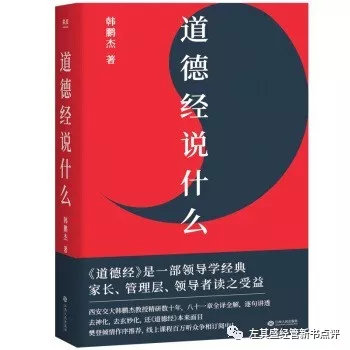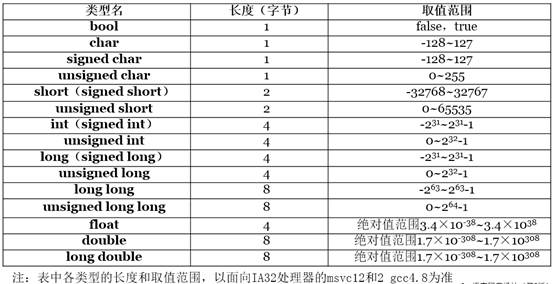I've recently had a breakthrough on the coding for my skee-ball style game. I was having serious issues with collision detection, which the boffins of stackoverflow have helped me solve. I was coding a tween for my object, a ball, to create a smooth roll effect because I hadn't been able to get it to move smoothly otherwise. I finally had a eureka moment and managed to make the object move incrementally instead of teleporting and was able to eliminate my tween. Without a tween, collision detection was working properly. But I still have some issues. First, how do I get gravity/friction to apply to the ball so that it doesn't come to a stop in a non-collision (or scoring) area when it otherwise runs out of steam? Two, how can I make it collide properly with the boundaries so it reverses course at a proper rate? And three, slightly unrelated but still a major challenge so I'll mention it now: if my collision areas (scoring targets) are aligned vertically, can I put conditions in the collision detection to test for rate of speed to effectively collide with a target? How can I determine that rate of speed?
Ok, here's my current wobbly code for rolling my ball and hitting a target:
function moveBall(event:MouseEvent):void
{
if (this.mouseX <= 172 + gameTable.tableLane.width)
{
ball.x = this.mouseX;
}
else
{
ball.x = 172 + gameTable.tableLane.width;
}
if (this.mouseX < 200)
{
ball.x = 200;
}
//trace(this.mouseX)
}
function releaseBall(event:MouseEvent):void
{
//rollBall();
ballSpeed = rollPower * 10;
//set minimum roll distance
if (ballSpeed < 313)
{
ballSpeed = 313;
}
ballStop = ball.y - ballSpeed;
gameElements.addEventListener(Event.ENTER_FRAME, rollBall);
gameElements.addEventListener(Event.ENTER_FRAME, ballTargetScore);
gameElements.removeEventListener(MouseEvent.MOUSE_MOVE, moveBall);
}
function rollBall(event:Event):void
{
trace("ballSpeed is " + ballSpeed);
trace("ballStop is " + ballStop);
if (ball.y > ballStop)
{
ball.y -= 6;
ball.y += friction;
}
}
//match targets to scoring values which should be tied to determineScore()
function ballTargetScore(event:Event):void
{
var targetValue:String;
var targetArray:Array = new Array(gameTable.upperScoringArea.upperScoringAreaCTarget,
gameTable.upperScoringArea.upperScoringAreaLtTarget,
gameTable.upperScoringArea.upperScoringAreaRtTarget,
gameTable.middleScoringArea.middleScoringAreaTargetTop,
gameTable.middleScoringArea.middleScoringAreaTargetMiddle,
gameTable.middleScoringArea.middleScoringAreaTargetLower,
gameTable.lowerScoringArea.lowerScoringAreaTarget);
var targetTextArray:Array = new Array(gameTable.upperScoringArea.upperScoringAreaC_text.text,
gameTable.upperScoringArea.upperScoringAreaLt_text.text,
gameTable.upperScoringArea.upperScoringAreaRt_text.text,
gameTable.middleScoringArea.middleScoringAreaU_text.text,
gameTable.middleScoringArea.middleScoringAreaM_text.text,
gameTable.middleScoringArea.middleScoringAreaL_text.text,
gameTable.lowerScoringArea.lowerSA_text.text);
for (var i:uint; i < targetArray.length; i++)
{
if (targetArray[i] != null)
{
trace("targetArray value is " + targetArray[i]);
if (ball.hitTestObject(targetArray[i]))
{
targetValue = targetTextArray[i];
trace('targetValue becomes',targetValue);
determineScore(targetValue);
gameElements.removeEventListener(Event.ENTER_FRAME, rollBall);
gameElements.removeEventListener(Event.ENTER_FRAME, ballTargetScore);
}
}
}
}
For more background on my development, please take a look at my previous question thread: How can I get rid of non-null hitTestObject error with already instantiated objects?
Thanks for any help,
Alan
Just want to add my function for determining the speed of the ball roll. It doesn't use a keyboard or any other conventional, that I have found in searching, method to control movement. The number changes dynamically until the mouse button is pressed and then that is the value to work with. This is inside my drawGame function to create the game table.
gameElements.addEventListener(Event.ENTER_FRAME, powerMeter);
function powerMeter(event:Event):void
{
rollPower += speed;
gameTable.powerMeter.height = rollPower;
//trace(rollPower);
if (rollPower == 60 || rollPower == 0)
{
speed *= -1;
//trace("switch speed to " + speed);
}
}
and the list of my related global vars:
//physics vars
var rollPower:Number = 0;
var speed:Number = 1;//speed of ball on roll
var ballSpeed:Number;
var ballStop:Number;
var friction:Number = 0.15;
var gravity:Number = 0.70;
Ok, I've sorta fixed it, but it is still messy visually. The ball will now move backwards. I've meant to put in a condition where the ball will be removed when it reaches a threshold which represents the gutter on the table; however, flash doesn't seem to run the condition statement soon enough to catch the ball before it has moved visually beyond the y value. It does remove the ball, but it looks ugly as the ball has rolled back onto the lane before it disappears. How can I get condition checking times sped up?
Here's my modified code. Pointers are appreciated.
function rollBall(event:Event):void
{
trace("ballSpeed is " + ballSpeed);
trace("ballStop is " + ballStop);
if (ball.y > ballStop)
{
ball.y -= 6;
ball.y += friction;
}
else
{
gameElements.removeEventListener(Event.ENTER_FRAME, rollBall);
gameElements.addEventListener(Event.ENTER_FRAME, rollBackwards);
}
}//end rollBall
function rollBackwards(event:Event):void
{
trace("rollBackwards is in effect");
trace("ball.y is " + ball.y);
if (ball.y < 313)
{
ball.y += 6 + gravity;
if (ball.y >= 313)
{
gameElements.removeEventListener(Event.ENTER_FRAME, ballTargetScore);
determineScore(null);
}
}
}//end rollBackwards
Ok, I wanted to put an update in here. I basically "solved" my rollBackwards timing issues by adjusting the Y coordinate. I either measured wrong, or got my orientation in opposition to the direction I was meant to be moving. It mostly works now.
function rollBackwards(event:Event):void
{
//trace("rollBackwards is in effect");
//trace("ball.y is " + ball.y);
if (ball.y < 240)
{
ball.y += 6 + gravity;
if (ball.y >= 235)
{
gameElements.removeEventListener(Event.ENTER_FRAME, ballTargetScore);
determineScore(null);
}
}
}//end rollBackwards
What is still a little ugly looking is when/where the ball is removed after making collision with a target. My, perhaps, awkward conditional chain of coordinate calculations largely works from an effectiveness POV, but the ball always seems to be removed several pixels(?) prior to the actual collision being measures - even accounting for bounding boxes as opposed to actual shapes. I also attempted to turn the ball into a tween just before it was removed to make it fade away in a pretty manor, but that never seemed to work. And I never even tried to tackle turning the arc-shaped "bumpers" under each target into actual collision objects that the ball could roll along if the aim was off. That was just put into the "too hard" basket. Below is my code for the collision measuring and the tweening, just in case anyone has any keen insights to add. Otherwise, I'm relatively happy with the end result.
//called during determineScore event
function disappearBall():void
{
myBallTween = new Tween(ball,"alpha",Strong.easeOut,ball.y + 5,ball.y,8,false);
myBallTween.obj.alpha = 0;
myBallTween.start();
}//end disappearBall
function ballTargetScore(event:Event):void
{
var targetValue:String;
var targetArray:Array = new Array(gameTable.upperScoringArea.upperScoringAreaCTarget,
gameTable.upperScoringArea.upperScoringAreaLtTarget,
gameTable.upperScoringArea.upperScoringAreaRtTarget,
gameTable.middleScoringArea.middleScoringAreaTargetTop,
gameTable.middleScoringArea.middleScoringAreaTargetMiddle,
gameTable.middleScoringArea.middleScoringAreaTargetLower,
gameTable.lowerScoringArea.lowerScoringAreaTarget);
var targetTextArray:Array = new Array(gameTable.upperScoringArea.upperScoringAreaC_text.text,
gameTable.upperScoringArea.upperScoringAreaLt_text.text,
gameTable.upperScoringArea.upperScoringAreaRt_text.text,
gameTable.middleScoringArea.middleScoringAreaU_text.text,
gameTable.middleScoringArea.middleScoringAreaM_text.text,
gameTable.middleScoringArea.middleScoringAreaL_text.text,
gameTable.lowerScoringArea.lowerSA_text.text);
for (var i:uint; i < targetArray.length; i++)
{
if (targetArray[i] != null)
{
//trace("targetArray value is " + targetArray[i]);
if (ball.hitTestObject(targetArray[i]))
{
//handle vertically aligned targets
if (centerTargetArray.indexOf(targetArray[i]) >= 0)
{
var centerIndex:uint = centerTargetArray.indexOf(targetArray[i]);
//trace("centerTargetArray check works " + centerTargetArray[centerIndex]);
if (ballStop <= 60 && ball.hitTestObject(gameTable.upperScoringArea.upperScoringAreaCTarget))
{
targetValue = targetTextArray[i];
//trace('targetValue becomes ' + targetValue);
determineScore(targetValue);
gameElements.removeEventListener(Event.ENTER_FRAME, rollBall);
gameElements.removeEventListener(Event.ENTER_FRAME, ballTargetScore);
}
if (ballStop > 60 && ball.hitTestObject(gameTable.middleScoringArea.middleScoringAreaTargetTop))
{
targetValue = targetTextArray[i];
//trace('targetValue becomes ' + targetValue);
determineScore(targetValue);
gameElements.removeEventListener(Event.ENTER_FRAME, rollBall);
gameElements.removeEventListener(Event.ENTER_FRAME, ballTargetScore);
}
if (ballStop > 100 && ball.hitTestObject(gameTable.middleScoringArea.middleScoringAreaTargetMiddle))
{
targetValue = targetTextArray[i];
//trace('targetValue becomes ' + targetValue);
determineScore(targetValue);
gameElements.removeEventListener(Event.ENTER_FRAME, rollBall);
gameElements.removeEventListener(Event.ENTER_FRAME, ballTargetScore);
}
if (ballStop > 135 && ball.hitTestObject(gameTable.middleScoringArea.middleScoringAreaTargetLower))
{
targetValue = targetTextArray[i];
//trace('targetValue becomes ' + targetValue);
determineScore(targetValue);
gameElements.removeEventListener(Event.ENTER_FRAME, rollBall);
gameElements.removeEventListener(Event.ENTER_FRAME, ballTargetScore);
}
if (ballStop > 161 && ball.hitTestObject(gameTable.lowerScoringArea.lowerScoringAreaTarget))
{
targetValue = targetTextArray[i];
//trace('targetValue becomes ' + targetValue);
determineScore(targetValue);
gameElements.removeEventListener(Event.ENTER_FRAME, rollBall);
gameElements.removeEventListener(Event.ENTER_FRAME, ballTargetScore);
}
}
else
{
targetValue = targetTextArray[i];
//trace('targetValue becomes',targetValue);
determineScore(targetValue);
gameElements.removeEventListener(Event.ENTER_FRAME, rollBall);
gameElements.removeEventListener(Event.ENTER_FRAME, ballTargetScore);
}
}
}
}
}//end ballTargetScore
I considered some "efficiency" measures in the long function above, but I couldn't quite get the logic right in lining up with the intended targets so I just wrote it out "longhand".
Thanks for the help everyone,
Alan



